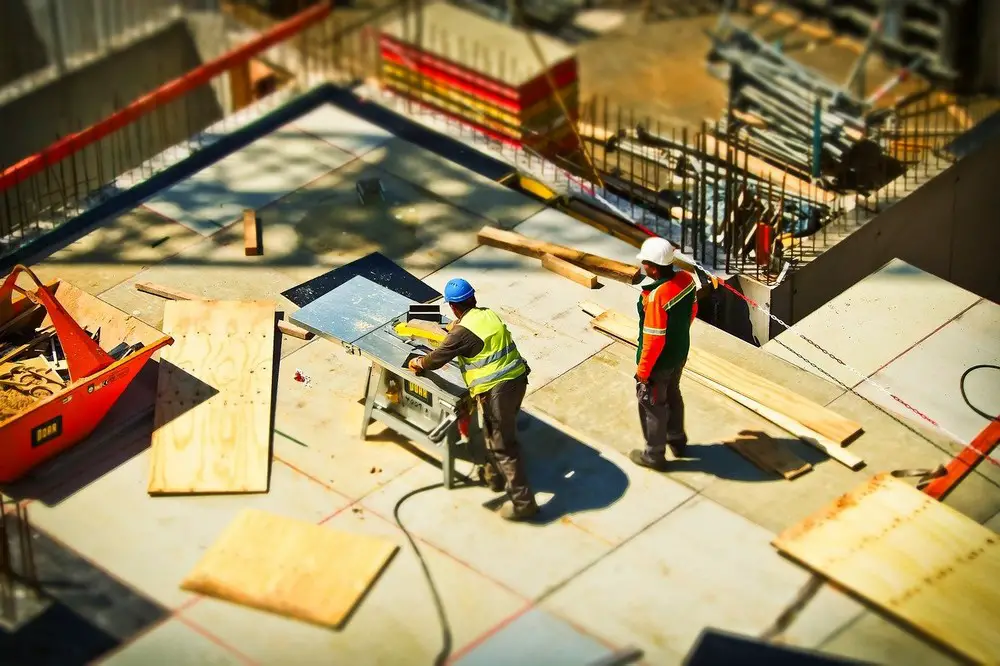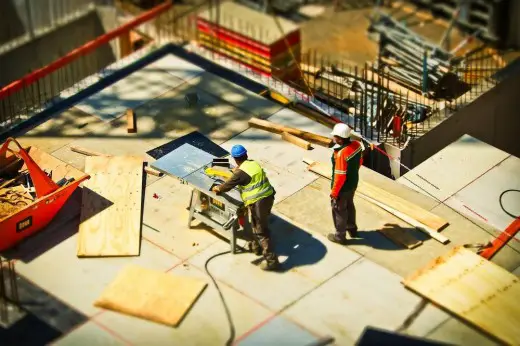5 construction innovations changing industry forever tips, Building trade advice
5 Construction Innovations Changing the Industry Forever
post updated 27 April 2025
Change is always on the horizon in the commercial construction industry, and it doesn’t look set to slow down any time soon. As technology evolves and inspires new innovations, the face of construction is evolving in a bid to streamline workflows and make companies more competitive.
So what techniques are currently rising to the fore, and what can we expect in the future?
14 Jan 2021
Commercial construction innovations
1. Internet of Things
Smart technology is everywhere, from thermostats in your home to military surveillance equipment. It comes as no surprise that it’s now used on construction sites all over the world. For example, embedded sensors allow the collection and management of data on:
Safety
Material performance
Workflow
Environmental conditions
Structural importance
But it doesn’t stop there – smart devices are beginning to enhance traditional safety gear. Smart boots can now track workers’ locations, while glasses fitted with video cameras, earbuds and a microphone can stream to cloud platforms. But perhaps the most impressive smart construction innovation of all is the exoskeleton suit. It allows construction workers to lift up to 200lb, and ABI Research even predicts that the market will reach a staggering $1.8 billion in 2025.
2. Altering Reality
They may have started in the gaming world, but virtual and augmented reality are being used more and more in construction. While the latter is employed a little less, VR comes in handy for allowing a real-time comparison of 3D models to physical spaces. It also allows stakeholders to have virtual walkthroughs of proposed buildings, meaning they can explore them in more detail than ever before.
3. Software & Connectivity
The world is certainly more technology-focused than ten years ago, and this is driving commercial construction innovation. Cloud-based software has become commonplace, with systems using data mining, statistics, modelling and machine learning to make predictions about projects. Thanks to the cloud, all stakeholders can access the most up-to-date information whenever and wherever they like.
Connectivity is as important as it has always been, and it’s only going to improve as 5G rolls out worldwide. With improved speed and a design geared towards smart technology, it is set to revolutionise the commercial construction industry.
4. Automation
There was a time when robots and drones were mere science fiction, but now they’re everywhere, including on construction sites. While technicians used to clamber over scaffolding to inspect a site, drones are now sent up, saving time and improving safety. There are also drone models like Skycatch, which can generate 3D models of sites. They can even calculate the volume of earth that needs to be moved.
That’s not where it stops. Robotic bricklayers work much faster than humans, and robots are also used in demolition thanks to being safer and cheaper than people, even if they are slower. Moreover, driverless earth-movers and dump trucks are in constant use in mining and road building.
One report claims robots will take over the construction industry by the end of 2020. While the coronavirus pandemic may change this timescale, we are almost there.
5. Sustainability
Green construction is a commercial trend that has recently been growing traction. Thanks to innovative technologies, now is the best time to get involved – especially considering more sustainable buildings are often more cost-effective. The falling expense of renewable power installations make them attractive in commercial construction. Having solar panels on-site can offset at least some of your operational costs.
There are many construction companies across the globe, like EasyBuild UK who are working within the sector to ensure all elements of construction are sustainable meaning they are creating structures and using processes that are environmentally responsible and resource-efficient throughout a building’s life-cycle from design, construction, operation and maintenance.
A rise in 3D printing has also contributed to this trend, and this market is expected to reach $56.4 million in 2021. In fact, it has become possible to 3D print an entire house in under 24 hours, and the repercussions of this discovery could be felt very soon.
It has also become more commonplace to donate unused materials and waste from remodels. In a bid to reduce landfill waste, Form Construction donates everything it can to a local college for construction and plumbing students to use for training. Managing Director Matt Thomson says this gives the students “hands-on experience”, helping them gain “skills and confidence”.
Sustainability in construction can be achieved not just through the use of software to minimise waste, recycling left over building materials, but also through ensuring that materials are responsibly sourced where possible. For many builders up and down the country, FSC timber has become a popular addition to the construction of property. By purchasing FSC timber, construction companies can be confident that the wood that they are using is from a responsibly managed forest with minimal environmental effects.
Innovation doesn’t look set to slow down soon. As new technologies and trends are discovered in other fields, it’s only a matter of time before they find their way to construction sites.
Whether these changes are the inclusion of the Internet of Things, automation, advances in software to the ever glaring need for the construction industry to become more sustainable, the future of the industry looks bright.
Comments on this 5 construction innovations changing industry forever guide article are welcome.
Edinburgh Architecture
New National Centre For Music Edinburgh

image courtesy of architects practice
Construction
7 things to know before starting construction project
Architecture firms in executing banking property construction
Commercial building construction and development
Comments / photos for the 5 construction innovations changing industry forever advice page welcome





